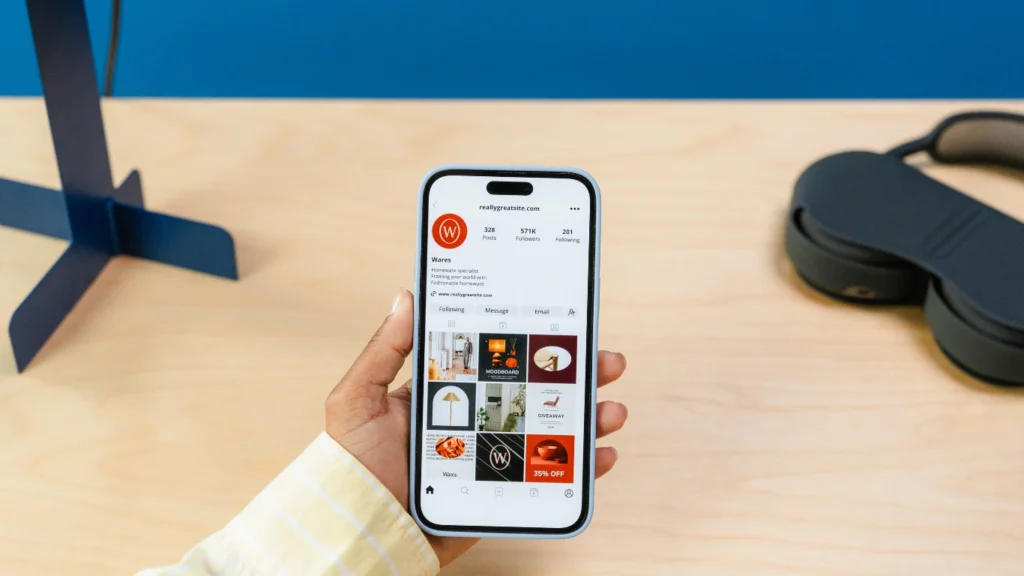Introduction to eCommerce Websites
In the ever-expanding world of eCommerce, driving traffic to your website is essential for success. However, with countless competitors vying for attention, standing out and attracting visitors can be challenging. Fortunately, there are proven strategies and tactics that can help you drive targeted traffic to your e-commerce site. In this comprehensive guide, we’ll explore 10 expert tips to boost traffic and increase conversions, from optimising your website for search engines to leveraging social media and email marketing.
Mastering Traffic Generation: 10 Expert Tips to Drive Visitors to Your eCommerce Website
1. Optimise Your Website for Search Engines:
Search engine optimisation (SEO) is a fundamental strategy for driving organic traffic to your e-commerce website. Start by conducting keyword research to identify relevant search terms and phrases that your target audience is likely to use. Incorporate these keywords strategically into your website’s content, including product descriptions, category pages, and blog posts.

Optimise meta titles, descriptions, and alt tags to improve visibility in search engine results pages (SERPs) and attract clicks. Improve site speed, mobile responsiveness, and user experience to enhance search engine rankings and provide a seamless browsing experience for visitors. Regularly monitor and analyse your website’s performance using tools like Google Analytics and Google Search Console to identify areas for improvement and track progress over time.
2. Create High-Quality Content:
Content marketing is a powerful tool for driving traffic and engaging your audience. Produce high-quality, informative content that addresses the needs, interests, and pain points of your target audience. This can include blog posts, articles, how-to guides, videos, infographics, and more.
Share valuable insights, tips, and advice related to your products or industry to establish your brand as a trusted authority. Encourage social sharing and backlinks by creating shareable, valuable content that resonates with your audience. Consistently publish new content to keep your website fresh and relevant in the eyes of both users and search engines.

3. Implement Email Marketing Campaigns
Email marketing continues to be one of the most powerful and cost-effective strategies for driving traffic, nurturing relationships with customers, and ultimately generating sales for e-commerce businesses. With the ability to deliver highly personalised and targeted messages directly to your audience’s inbox, email marketing allows you to engage with your customers in a meaningful way, encouraging repeat visits to your website and increasing the likelihood of conversions.
The first step in creating a successful email marketing campaign is to build and segment your email list effectively. By grouping subscribers based on key factors such as their purchase history, demographics, and engagement level, you can ensure that your emails are highly relevant to each recipient. This segmentation enables you to craft personalised content and offers that resonate with the unique needs and interests of different audience groups, resulting in higher engagement rates and a more positive customer experience.
Once you’ve segmented your list, you can begin sending targeted email campaigns that promote new products, special offers, exclusive discounts, or upcoming sales events. These emails should be designed to encourage recipients to visit your website and make a purchase. In order to grab attention in crowded inboxes, it’s essential to craft compelling subject lines that entice recipients to open your email. A strong subject line can make a huge difference in whether or not your email gets noticed. In addition to the subject line, the visual appeal of your email design plays a critical role in engaging your audience. A clean, well-organised layout with attention-grabbing images and a clear call to action will encourage readers to take the next step.
To maximise the effectiveness of your email marketing campaigns, it’s important to continuously monitor key performance metrics, such as open rates, click-through rates, and conversion rates. These metrics provide valuable insights into how well your emails are resonating with your audience and which elements of your campaigns are performing best. By analysing these results, you can identify trends, optimise your messaging, and make data-driven decisions to improve future campaigns. Testing different subject lines, email copy, and designs through A/B testing is another great way to refine your strategy and ensure you’re delivering the most engaging and effective content.
In conclusion, email marketing offers an incredible opportunity for e-commerce businesses to stay connected with their customers, drive repeat traffic to their website, and increase sales. By building a segmented email list, personalising content, sending targeted campaigns, and regularly optimising your approach, you can unlock the full potential of email marketing to achieve long-term business success.
4. Leverage Social Media Marketing:
Social media platforms present an incredible opportunity for e-commerce businesses to reach a vast audience and drive targeted traffic to their websites. With billions of active users across various platforms, social media offers powerful tools for engaging potential customers, building brand awareness, and increasing sales. To maximise the impact of your social media efforts, it’s important to first identify which platforms are most popular with your target audience. By focusing your efforts on the social media channels that align with your audience’s preferences, you can ensure that your content is being seen by the right people.
Once you’ve identified the right platforms, it’s essential to create engaging, visually appealing content that captures your audience’s attention and encourages interaction. High-quality images, videos, and eye-catching graphics are crucial for standing out in crowded feeds. Crafting content that sparks likes, shares, and comments will help increase your brand’s reach and visibility, allowing you to engage with both current followers and potential customers. Content that resonates with your audience can lead to more organic engagement, creating a ripple effect that can extend your brand’s reach far beyond your immediate followers.
In addition to regular posts, take advantage of interactive features offered by platforms like Instagram Stories, Facebook Live, and Twitter polls to further engage your audience and spark meaningful conversations. These features allow you to connect with your audience in real-time, offer exclusive behind-the-scenes looks, run contests, or host live Q&A sessions. Engaging in these ways fosters a sense of community and encourages your followers to participate, increasing their connection with your brand.
Another effective strategy for driving traffic is to leverage influencer partnerships and collaborations. By working with influencers who have an established following within your niche, you can amplify your brand’s visibility and reach new audiences. Influencers can authentically promote your products, share personal experiences, and create content that resonates with their followers, providing social proof and increasing trust in your brand. Influencer marketing, when done right, can lead to significant traffic growth and higher conversion rates.
Additionally, social media advertising offers an invaluable tool for targeting specific demographics, interests, and behaviours, allowing you to direct traffic straight to your website. Platforms like Facebook, Instagram, and LinkedIn provide advanced targeting options, enabling you to hone in on users who are most likely to be interested in your products or services. Whether you’re promoting a new product launch, special offer, or seasonal sale, social media ads can help you drive high-quality traffic to your site, boost brand awareness, and increase conversions.
In conclusion, social media is a powerful tool for driving traffic to your e-commerce website and building a loyal customer base. By focusing your efforts on the right platforms, creating engaging content, utilising interactive features, partnering with influencers, and leveraging paid ads, you can significantly increase your online visibility and reach your business goals. Social media offers endless opportunities for engagement and growth, making it an essential component of any successful e-commerce marketing strategy.

5. Offer Compelling Discounts and Promotions:
Discounts and promotions are powerful incentives for driving traffic and converting visitors into customers. Offer exclusive discounts, limited-time promotions, and flash sales to create a sense of urgency and encourage immediate action. Promote your offers across multiple channels, including your website, social media, email newsletters, and advertising campaigns.
Consider partnering with influencers or affiliate marketers to extend the reach of your promotions and attract new customers. Implement referral programmes and loyalty rewards to incentivise repeat purchases and encourage word-of-mouth marketing. Monitor the performance of your discounts and promotions to determine which strategies resonate most with your audience and drive the highest ROI.
6. Invest in Paid Advertising:
Paid advertising can be an incredibly effective strategy for driving targeted traffic to your e-commerce website and enhancing its visibility in search engine results. By leveraging the power of paid ads, you can ensure that your products or services reach the right audience at the right time, increasing your chances of generating high-quality leads and boosting sales. One of the most common and powerful forms of paid advertising is pay-per-click (PPC) advertising, where you bid on specific keywords that are relevant to your business. Platforms like Google Ads and Bing Ads allow you to target users who are actively searching for products or services that are similar to yours, making your ads more likely to appear in front of individuals who are already interested in what you offer.
In addition to search engine advertising, you can also tap into display advertising networks and social media platforms to expand your reach. Display ads, which can appear as banners, videos, or other formats, allow you to target users based on a wide range of factors, including demographics, interests, online behaviour, and even location. Social media advertising platforms like Facebook, Instagram, and LinkedIn also provide robust targeting options, enabling you to hone in on your ideal customer segments based on their preferences and activities. This level of targeting helps ensure that your ads are shown to individuals who are more likely to engage with your brand and ultimately make a purchase.
To get the most out of your paid advertising campaigns, it’s crucial to continuously experiment with different ad formats, targeting options, and messaging. A/B testing your ads can provide valuable insights into what resonates most with your audience and which approaches deliver the best results. Whether you’re testing different headlines, images, or calls to action, optimising your ads is key to improving performance and maximising your return on investment (ROI).
It’s equally important to closely track and analyse key performance metrics to assess the effectiveness of your paid advertising efforts. Metrics such as click-through rates (CTR), conversion rates, and return on ad spend (ROAS) are essential for understanding how well your ads are performing. By monitoring these metrics, you can identify areas of improvement, adjust your strategy accordingly, and ensure that you are allocating your advertising budget efficiently. With careful planning, ongoing optimisation, and data-driven decision-making, paid advertising can become a powerful tool for increasing your e-commerce website’s visibility, driving qualified traffic, and ultimately boosting sales.
7. Enhance Your Website’s User Experience:
A seamless user experience is essential for retaining visitors and driving repeat traffic to your e-commerce website. Ensure that your website is easy to navigate, with intuitive menu navigation, clear calls-to-action, and streamlined checkout processes. Optimise your website for fast loading times and mobile responsiveness to accommodate users on smartphones and tablets.
Provide detailed product information, high-quality images, and customer reviews to help visitors make informed purchasing decisions. Implement features like live chat support, product recommendations, and personalised shopping experiences to enhance engagement and satisfaction. Continuously monitor user feedback and behavior to identify areas for improvement and optimize the user experience over time.

8. Optimise for Mobile Devices:
As smartphones and tablets continue to dominate the digital landscape, optimising your e-commerce website for mobile devices has become more important than ever in attracting and retaining customers. A mobile-friendly website not only provides a seamless shopping experience for your visitors, but it also helps boost your site’s visibility and ranking in search engines. Ensuring that your website is fully responsive and adjusts perfectly to different screen sizes and devices is essential for maintaining a positive user experience.
To achieve this, it’s crucial to prioritise mobile-friendly design elements, including larger buttons that are easy to tap, clear and legible text that can be read on smaller screens, and simplified navigation menus that make it easier for customers to browse products and make purchases. Minimising loading times is also key to improving mobile performance, as slow page speeds can lead to high bounce rates and lost sales.
Additionally, you should aim to streamline the mobile shopping experience by reducing the number of steps needed to complete a purchase, such as offering one-click payment options or autofilling customer information. Regularly testing your website on a variety of mobile devices and browsers is important to identify and fix any usability or compatibility issues that may arise.
Finally, keeping track of your mobile traffic and analysing user behavior through tools like Google Analytics allows you to monitor performance and identify areas for improvement. By consistently optimising your mobile website, you can ensure that your customers have a smooth and enjoyable shopping experience, encouraging them to return and shop again.
9. Implement Retargeting Campaigns:
Retargeting campaigns are a powerful tool for re-engaging visitors who have previously visited your website but did not make a purchase. Utilise retargeting pixels or cookies to track user behavior and display targeted ads to users across the web as they browse other websites and social media platforms.
Segment your retargeting audiences based on factors such as pages visited, products viewed, and shopping cart abandonment. Create personalised ad creatives and offers tailored to each audience segment to encourage return visits and conversions. Monitor retargeting campaign performance metrics such as click-through rates, conversion rates, and cost per acquisition (CPA) to optimise your campaigns for maximum effectiveness.
10. Continuously Monitor and Optimise Performance:
Driving traffic to your e-commerce website is an ongoing process that requires constant monitoring and optimisation. Regularly review key performance indicators such as website traffic, conversion rates, bounce rates, and average order value to gauge the effectiveness of your strategies and identify areas for improvement.
Utilise web analytics tools like Google Analytics and heatmapping software to track user behavior, identify trends, and pinpoint areas of friction or drop-off in the conversion funnel. Experiment with different strategies, tactics, and messaging to optimise performance and achieve your traffic and revenue goals. Stay informed about industry trends and best practices to adapt and evolve your strategies over time.
Conclusion
Driving traffic to your e-commerce website is a crucial task that demands a strategic, multi-faceted approach. In today’s highly competitive online marketplace, it’s not enough to rely on a single tactic or channel to attract visitors. Instead, a combination of diverse methods is necessary to ensure consistent traffic growth and long-term success. By implementing the 10 expert tips outlined in this guide, you can attract highly targeted visitors, increase user engagement, and ultimately drive higher conversions for your e-commerce business.
One of the most effective ways to drive traffic is by optimising your website for search engines (SEO). By focusing on keyword research, on-page SEO elements, and building a strong backlink profile, you can enhance your website’s visibility in search engine results pages (SERPs). This will help you attract organic traffic from users who are actively searching for products like yours, making them more likely to convert into paying customers.
Social media is another powerful tool to increase traffic and brand awareness. Platforms like Instagram, Facebook, and TikTok offer unique opportunities to engage with your audience, share product updates, and showcase customer testimonials. By building an active and engaged social media presence, you can drive direct traffic to your site and foster a loyal community around your brand.
Paid advertising campaigns, such as Google Ads or Facebook Ads, also play a critical role in driving traffic, especially for businesses looking to scale quickly. With paid ads, you can target specific demographics, interests, and behaviors to reach the most relevant audience for your products. When done effectively, paid campaigns can yield an excellent return on investment by driving high-intent traffic to your website.
Additionally, content marketing plays a vital role in attracting traffic. By creating valuable content that addresses your audience’s pain points, answers questions, or provides useful insights, you can position your brand as an authority in your niche. This content can also be repurposed for blog posts, email newsletters, and social media posts, helping you maintain consistent engagement with your audience.
Email marketing is another key tactic for driving repeat traffic to your e-commerce site. Building and nurturing an email list allows you to engage with your customers, offer personalised product recommendations, and announce special promotions. With well-crafted email campaigns, you can not only drive traffic but also increase the likelihood of repeat purchases from existing customers.
No matter the traffic channels you choose, it’s important to prioritise providing value to your audience. A positive user experience is key to turning visitors into loyal customers. This means offering a seamless shopping experience, fast website load times, easy navigation, secure checkout, and customer support that is responsive and helpful.
By delivering a seamless and enjoyable experience across all touchpoints, you’ll increase customer satisfaction and encourage repeat visits, ultimately maximising your success in the competitive e-commerce landscape. A well-rounded strategy that combines SEO, social media engagement, paid advertising, content marketing, and email marketing—coupled with an emphasis on delivering value—will put you on the path to attracting consistent traffic and boosting conversions.
Contact Digipixel today to build a website that stands out and drives measurable results.